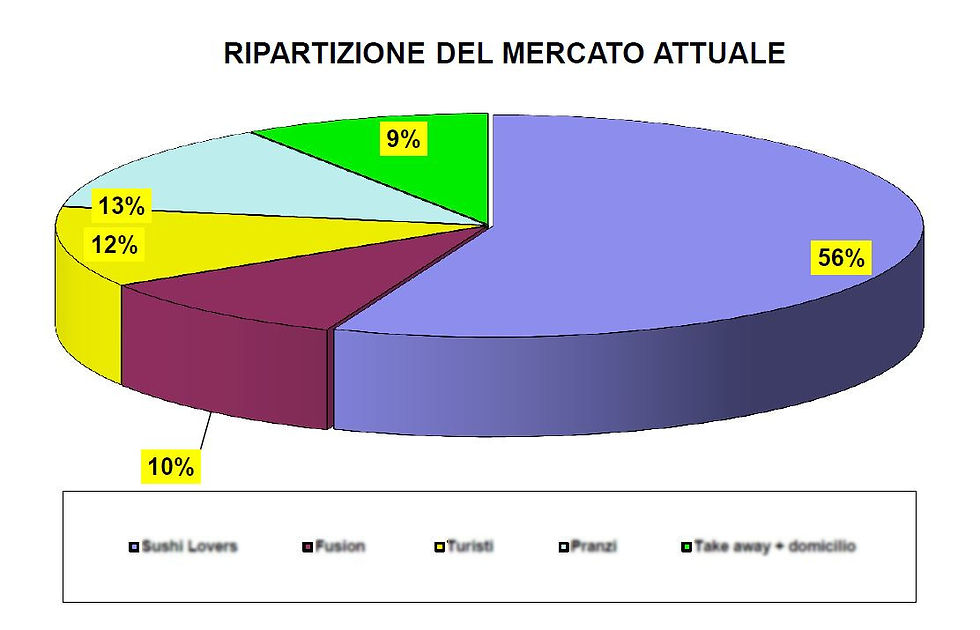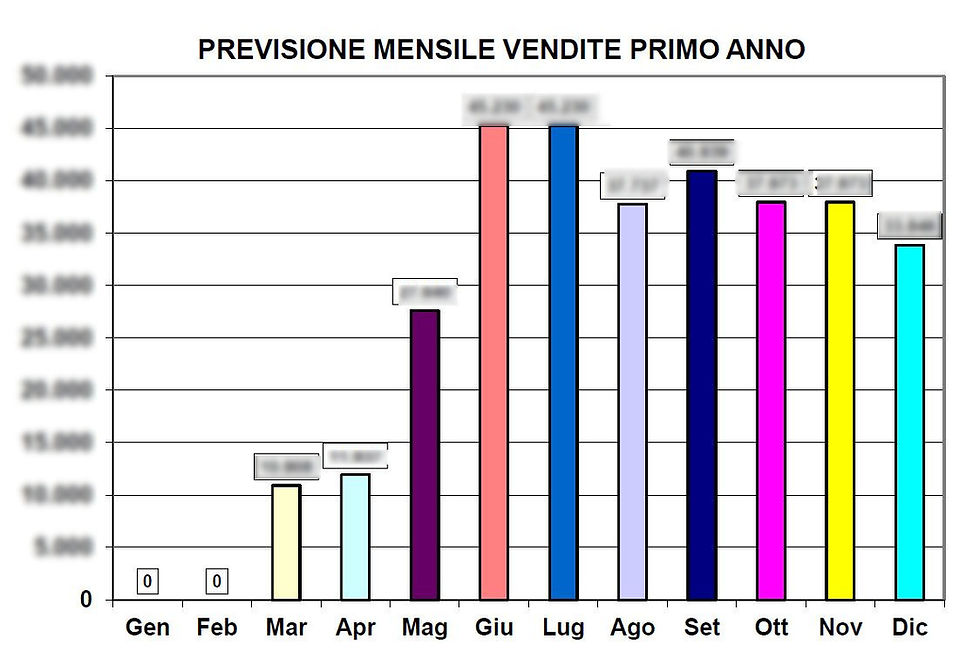What (really) is the marketing plan
- Redazione
- Oct 16, 2024
- 8 min read


Who is writing: I am Massimiliano Hangler and for 10 years I have been trying to explain to entrepreneurs why they should write (and not think) a marketing plan ,
In doing so, I realized that very often my interlocutor has never seen a marketing plan, and therefore cannot even understand whether it can be useful or not.
Finally, the confusion is further increased by the amount of "fluff" (yes, I had no other terms that conveyed the idea better) that one sees, reads, and hears on the subject.
This post is therefore intended to describe the parts that make up a marketing plan tailored to the company, illustrate its purposes, and clarify a document that solves 90% of a company's sales problems. You can also find here a practical scheme for writing your own .
You don't need any particular marketing knowledge to read this post, but I believe (and hope) that it will help more open-minded entrepreneurs understand the importance of a written document (and what this document should be like) in the era of digital ephemerality.
SPOILER: If you’re short on time and want to know right away why you need a marketing plan, scroll down to the bottom of the post and you’ll find the answer.
The parts that make up the marketing plan
The path to building a marketing plan is a codified sequence of analyses that allow you to have objective information on which to make strategic decisions. Here is the ideal sequence:
Purpose of the plan
Description of the project/business idea
Economic goals
Marketing Objectives
Market Description
Market breakdown
Market Forecast
Competitive profile of the company
Swot Analysis
Pest Analysis
Marketing Strategy
Marketing Mix
Pricing Policies
Promotion policies
Distribution policies
Product Policies
Marketing Profit and Loss Statement
Budget and contribution margin
Implementation Guidelines
Purpose of the plan
It may seem trivial, but first of all you have to ask yourself why you are thinking of creating a marketing strategy . This choice in fact defines all your objectives in a cascade.
Do you want to launch a new product ? Do you want to increase the number of customers ? Do you want to increase the turnover per customer? Do you want to attack new markets ?
Often these questions are answered in a confusing way and, in the worst case, with a summary "Well, yes, a bit of everything, right?"
On the contrary, clarity of purpose contributes to the success of the strategy, because defining the final goal avoids taking the wrong route during the journey .
The answer to this question must therefore be written and argued in the first section of the plan.
Description of the business idea
Continuing, one of the first questions I ask when I am asked for marketing advice is " Describe your idea to me, tell me why your customers should buy from you ."
Unfortunately, the answer to this question cannot be summed up in empty phrases like "for the service" or "because our product is superior" or even "because a product like this doesn't exist yet".
The purpose of the marketing plan is precisely to avoid these responses , helping the company to find a differentiating focus with respect to the market, and therefore also a purchasing motivation for customers.
Side note: if you are interested in this particular aspect I recommend the book "Brand Positioning" by Marco de Veglia.
If your company description at this stage of the marketing plan is the same as that of your competitors, well, your problem is not the creation of a marketing plan, but rethinking your company!
Economic objectives and marketing objectives
Defining your financial goals in advance means knowing how much you will need to sell to achieve the business profit you desire.
However, this aspect is often confused with the drafting of marketing objectives, and the two areas are not correlated.
Economic goals and marketing goals are two different things.
For example, a 10% increase in turnover ( economic objective ) can be achieved with completely different marketing objectives :
Increase in the number of customers
Increase in average spend per customer
Introduction of a new product
Etc.
Often the entrepreneur limits himself to vaguely defining the economic objectives, but rarely links them to precise marketing objectives .
Market Description
This point also helps the entrepreneur, and not a little!
Knowing how much your target market is worth , what the trends are, and which categories it can be divided into are just some of the vital information needed to have a strategic business approach.
98% of the companies I met had no idea of the value of their market, and therefore their market share.
This made it impossible for them to determine how much to invest in marketing , because there was no yardstick for comparing potential earnings.
But that's not all: market research also includes an in-depth look at customer purchasing behavior , average spending , obstacles to change , and much more.
In other words, all those factors that can favor or disfavor your business in the market.
Market breakdown and forecast

Market division, or segmentation, consists in dividing the market into homogeneous customer groups on which to carry out specific marketing actions.
A common mistake is in fact to approach the market as a whole as an indistinct entity of customers, with the effect of diluting the effectiveness of marketing campaigns .
This is for a simple fact: the motivations that drive different customers to purchase are different,
In the marketing plan each customer segment must be described , quantified , and compared with the others, also in relation to the competition.
In this way it is possible to give different action priorities and budgets to each customer segment, attacking the market in successive phases with a rational and objective criterion.
Finally, this section includes a check of market trends : are sales for each segment growing, stable or decreasing? What is the average expenditure per customer/order? What is its trend?
This information also helps to build a picture of the market that is useful for making well-considered strategic decisions, but above all to avoid investing in the wrong or risky sectors and segments .
Competitive profile of the company
This section of the marketing plan is very important because it puts your company in relation to competitors to build a reliable index that allows you to understand how competitive it is in the market.

Typically, these three factors are analyzed: relative price, differentiating quality (i.e. how different your company is perceived from others) and market share.
What emerges is a map of the market in which companies are compared, to define who holds the leadership and what are the factors that have allowed this result.
By factors we mean the key success factors (KSF), that is, the critical factors that determine a better perception of the product/service in the market and therefore increase the probability of purchase by customers.
These factors are generally derived from market research on different customer segments or, in the absence of data, can be established internally thanks to the entrepreneur's experience.
SWOT Analysis
At the beginning, I confess, I considered the SWOT analysis (Strenghts, Weaknesses, Opportunities, Threats) a mere stylistic exercise that did not lead to useful information for the marketing strategy of the SME.

Over time, however, I have increasingly appreciated its usefulness in the analytical phase, especially by cross-referencing the 4 points mentioned above with respect to the competition, and thus identifying the competitive GAP between the company's weaknesses and the market .
This analysis added to the next one, the PEST analysis, thus becomes a litmus test of the goodness of the company's strategic marketing structure, highlighting the weaknesses that too often threaten marketing campaigns even before they are implemented .
PEST Analysis
PEST analysis (acronym for political, economic, social and technological) is an analysis of the scenario in which the company operates, useful for making medium-term strategic choices.
This activity allows to identify the macro factors , often outside the company's control, which influence the trend of the competitive context ,
Very often, in fact, the importance of becoming aware of those elements that inevitably influence the market is underestimated, considering them "something that cannot be intervened upon" and therefore not preparing strategies in this regard.
On the contrary, a complete marketing plan tries to interpret these changes, to ensure that the company is equipped in time and prepared for market evolution and possible crises .
Marketing Strategy
This section is the heart of the marketing plan and connects the analyses mentioned so far with the activities aimed at bridging the competitive gap and then intercepting the different customer segments.
It is therefore a question of defining how to be "interesting" in the eyes of customers and then identifying the specific activities to be carried out to activate the different targets of customers, prospects and otherwise.
It goes without saying that it is useless to define an operational marketing plan (specific activities) if the strategy has not been established : in other words, it is useless to try to sell your products or services if you are not sure that you have set up your marketing mix in the best way (this is also a classic mistake made by those who do not have a written marketing plan in the company).
Marketing Mix
If you've ever "chewed" a little about marketing, you've surely heard of the 4Ps: product (or service, it's the same), price, place (distribution channel) and advertising/promotion.
These are the 4 areas that contribute to building the marketing positioning of your product and your brand.
And when we talk about positioning we mean the position that your company occupies in the minds of customers and potential customers : the four Ps change customer perception, and the purpose of the marketing plan is to influence market perceptions.
The marketing mix therefore does not aim to build the best product on the market, but to position your company's product associated with the characteristics you desire in the minds of the right customers .
Clear, right? ;-)
Marketing Profit and Loss Statement
Once the strategy and marketing mix have been defined (which is embodied in operational marketing actions to influence customer perception), it is then time to evaluate the impact of the choices made on the company's profit and loss account.
In general , marketing costs are subtracted from revenues as are commercial costs, considering them as variable business costs , and therefore influence the first contribution margin.

In some cases this margin can even be zero or negative, such as for the launch of a new product on the market. However, this almost never happens in the case of small and medium-sized businesses.
It is clear that this paragraph of the marketing plan answers the age-old question: " How much should I invest in marketing? "... and the answer can only come from the steps described above, and carried out in the sequence described.
Bottom line: Why Write a Marketing Plan?
Well, as spoiled at the beginning of the post here are the top 3 reasons why you should seriously think about writing your marketing plan :
The analyses that lead to the writing of the marketing plan are essential analyses to build a successful strategy. Usually they are not known or are not carried out except when the marketing plan is being written.
Having a written document means having a strategic guide accessible to all , preventing different offices (or different people, even in small companies) from making autonomous decisions that undermine positioning.
Having a written strategy and set financial and marketing goals allows you to measure the results of your campaigns, helping you decide what worked and what didn't.
Not satisfied? Want to know how your marketing is doing? Try our free marketing test for instant feedback.
Comments